Planning Effective Writing Assignments
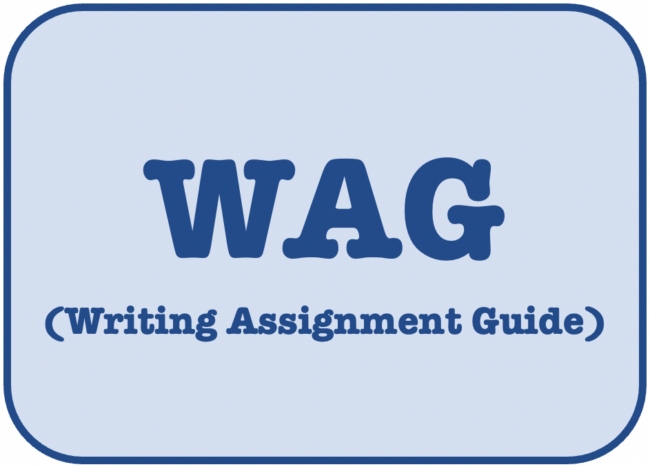
When assigning writing tasks, how often do you receive work that does not align with your expectations? One common issue is that students may lack a clear understanding of what is expected. Writing task directions are often too vague, such as:
- Write a composition that compares and contrasts…
- Write a short research report about…
- Use information from these three sources to answer this question…
With broad assignments like these, students may understandably be unsure about the purpose for a writing piece, the required length, the type and amount of content to include, and the available support. They may also be unclear about how their work will be graded.
A key recommendation from the Writing Next research report (Graham & Perin, 2007) is for teachers to provide specific product goals:
“Setting product goals involves assigning students specific, reachable goals for the writing they are to complete. It includes identifying the purpose of the assignment (e.g., to persuade) as well as characteristics of the final product. Specific goals in the studies reviewed included (a) adding more ideas to a paper when revising or establishing a goal to write a specific kind of paper and (b) assigning goals for specific structural elements in a composition. Compared with instances in which students were simply given a general overall goal, these relatively simple procedures resulted in a positive effect size, and the average effect was strong. Overall, assigning students goals for their written product had a strong impact on writing quality.” (p. 17)
To help students successfully complete content writing tasks, consider the following steps when planning a writing assignment:
- Determine the writing objective. Is the goal to have students process content knowledge, deepen their understanding, or reflect on their learning? Will the writing task be used to assess students’ content learning?
- Generate an appropriate writing task. Choose the best type of writing—informational, opinion/argument, or narrative—based on the objective.
- Set clear goals. Define the TAP (Task, Audience, Purpose). Clearly state expectations for length, structure, and other requirements.
- Provide scaffolds. Offer models, examples, or other support to assist students in meeting expectations.
- Plan for feedback and revision. Determine whether revision is necessary and feasible based on the writing objective and task. Identify tools or methods for providing feedback.
Writing Assignment Guide (WAG)
A key instructional strategy is using a Writing Assignment Guide (WAG). This planning tool is part of the Keys to Content Writing professional development course. A WAG can be used to plan assignments and communicate expectations to students. A WAG should be shared with students so they understand the requirements and the support available to them. A copy of the WAG template is shown below.
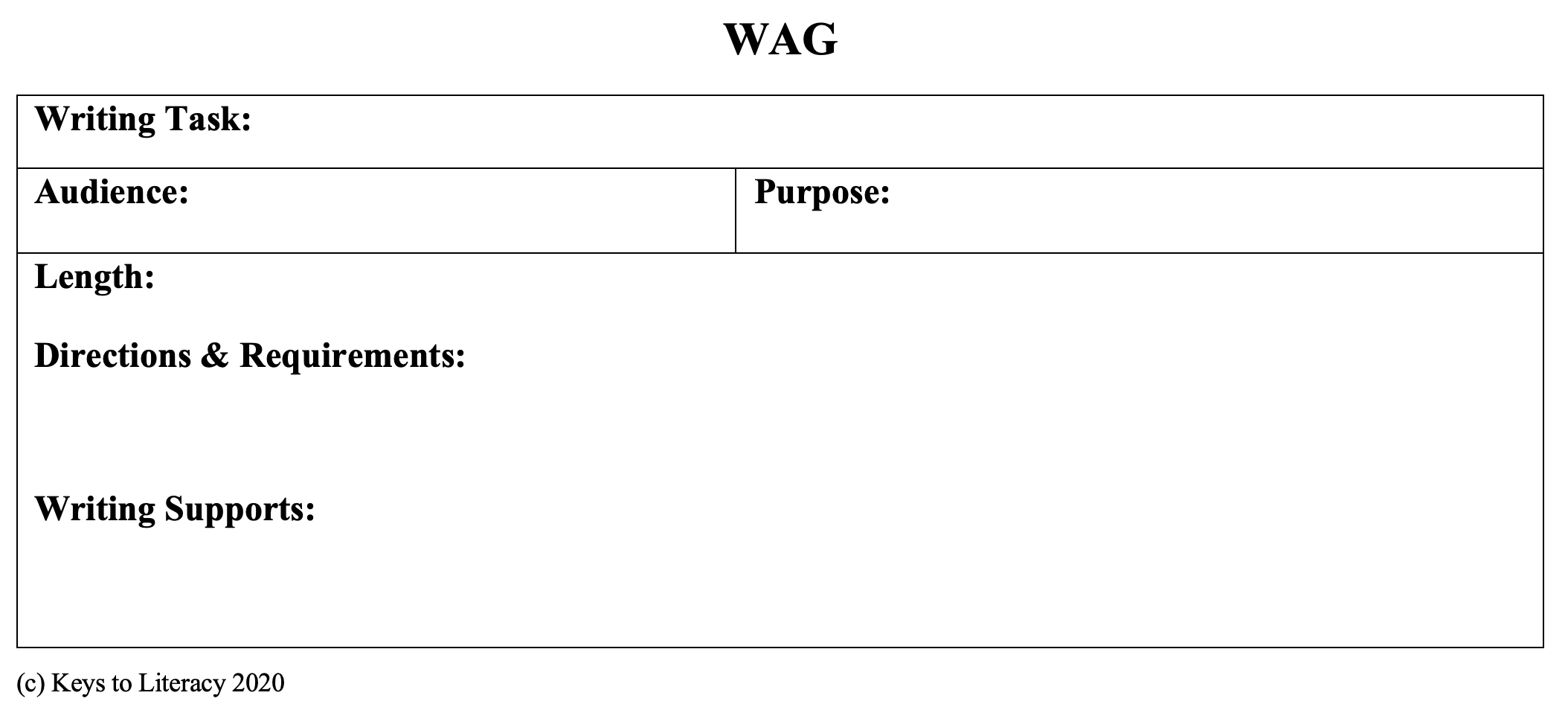
A WAG typically includes the following components:
- Writing Task: A description of the assignment, including the type of writing (informational, opinion/argument, narrative, or a combination).
- Audience: Identification of the intended readers (e.g., the teacher, peers, or an authentic audience).
- Purpose: The reason for the writing, such as reinforcing content learning, developing writing skills, or fulfilling a specific purpose related to a particular audience
- Length: Requirements for the length of the writing piece, represented by a range for the number of words, sentences, paragraphs, or pages.
- Directions & Requirements: Specific expectations and requirements related to the content and text structure, including introductions and conclusions, use of certain vocabulary or transition words and phrases, formatting (e.g., font style and size, line spacing and page margins, etc.), suggested timeline and due dates, citation requirements, and grading criteria.
- Writing Supports: Scaffolds and supports available to help some or all of the students complete the assignment.
A list of guiding questions is provided below, followed by several classroom examples.
Completing a WAG: Planning Questions
Writing Task:
- What content topic are you covering?
- What type of writing task would be best to support the learning of this content?
Audience:
- Does the assignment lend itself to an authentic audience (i.e., in addition to the teacher and student peers)?
- Consider these options: members of the community, organizations or their members, businesses, politicians, younger or older students, family members, peers, blogs, student publications.
Purpose:
- What do you want the writing piece to do as it relates to the topic?
- What is the student’s personal goal for writing this piece?
- If there is an authentic audience, what is the reason for communicating with this audience
- through this piece?
Length:
- Suggest a range in number of words, sentences, paragraphs, or pages.
Directions & Requirements:
- What content information must students address, including related vocabulary?
- Are there any requirements related to sources?
- Is there a particular format you want students to follow?
- Are there any specific requirements for the introduction, body development, use of transitions, or conclusion?
- What opportunities will be provided for peer collaboration?
- Will the student receive feedback from peers or the teacher?
- Will there be an opportunity for students to revise some or all of the writing piece?
- Will the piece be graded? If yes, how?
Writing Supports:
- What scaffolds will you provide all or some of the students? Possibilities:
- Mentor model samples
- Two-column notes
- Topic web
- Writing templates
- Set of steps
- Checklists or rubrics
Classroom Examples
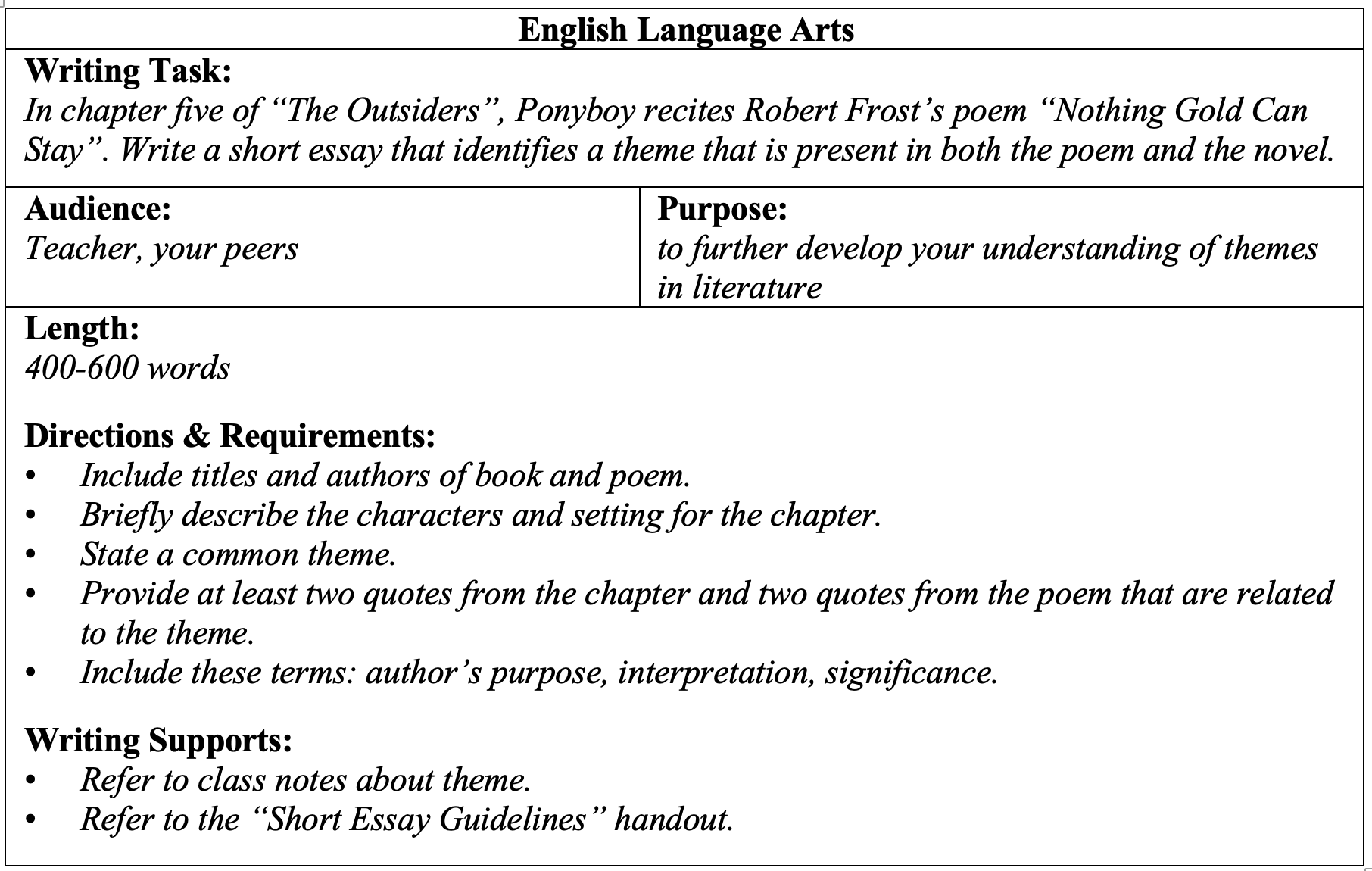
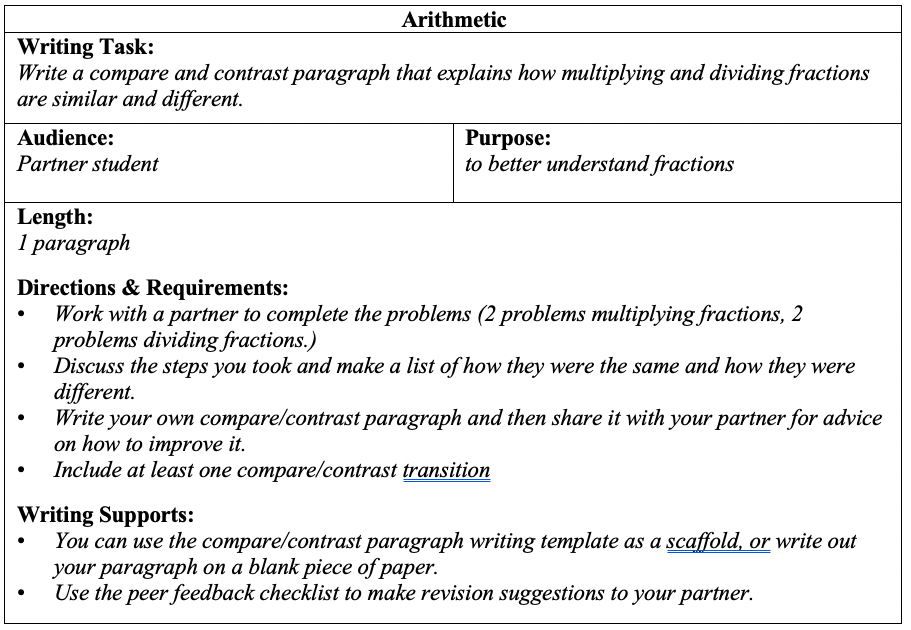

Sharing a WAG with Students
To ensure students understand the requirements and available support, teachers should present the WAG in a format suited to their students’ age and skill level. They may distribute a copy as is or adapt the information into a more student-friendly format. Two examples are provided below.
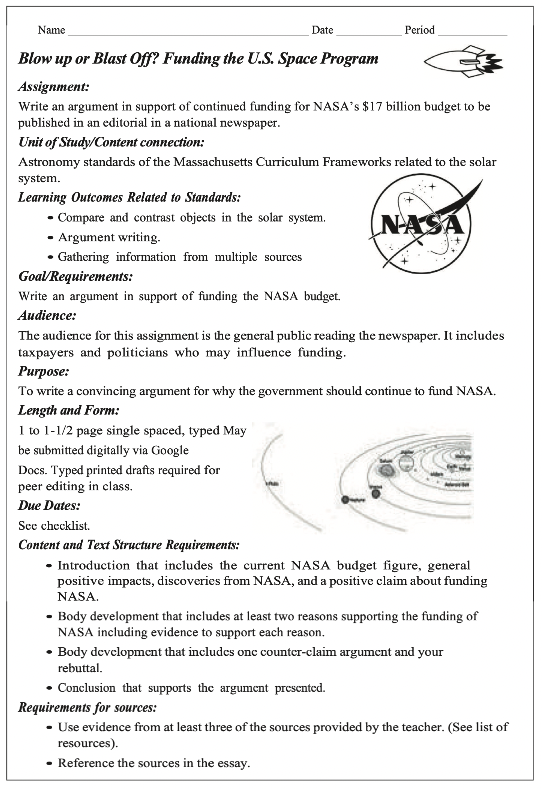
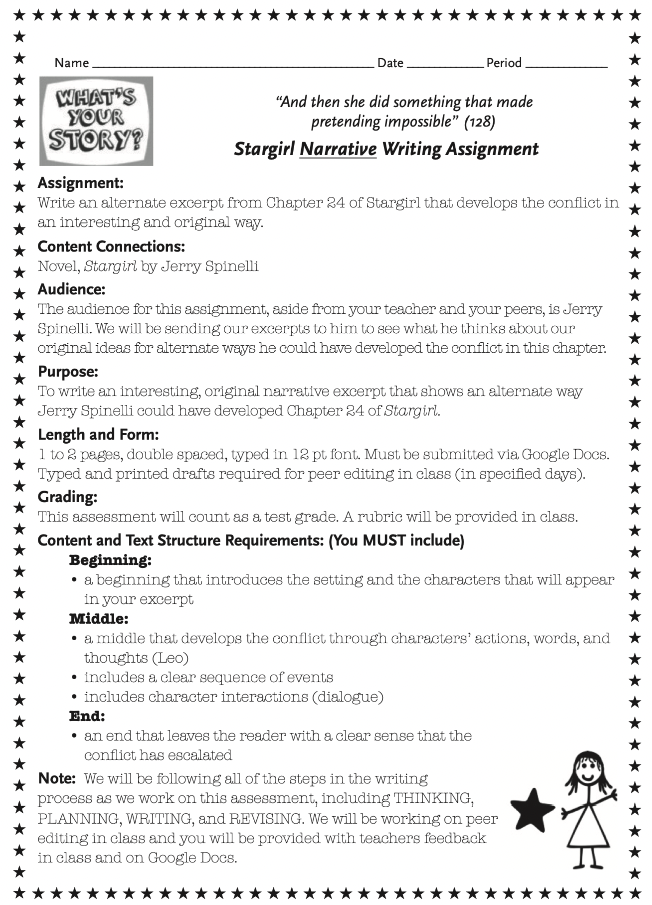
Using a WAG As a Guide for Grading
One of the most common questions students ask is, “How will my writing be graded?” The Length and Directions & Requirements sections of the WAG help clarify what students should check for when reviewing and revising their work. Key considerations include:
- Did they meet the length, structure, and formatting requirements?
- Did they use appropriate vocabulary?
- Did they include all required content?
When grading a writing piece, teachers can incorporate the WAG criteria into a scoring rubric. This allows grading decisions to be based on clear, predetermined standards rather than a general impression of writing quality.
References:
- Graham, S., & Perin, D. (2007). Writing next: Effective strategies to improve the writing of adolescents in middle and high schools – A report to Carnegie Corporation of New York. Washington, DC: Alliance for Excellent Education.
- Sedita, J. (2020). Keys to content writing, 3rd Edition. Rowley, MA: Keys to Literacy.

 Joan Sedita is the founder of Keys to Literacy and author of the Keys to Literacy professional development programs. She is an experienced educator, nationally recognized speaker and teacher trainer. She has worked for over 35 years in the literacy education field and has presented to thousands of teachers and related professionals at schools, colleges, clinics, and professional conferences.
Joan Sedita is the founder of Keys to Literacy and author of the Keys to Literacy professional development programs. She is an experienced educator, nationally recognized speaker and teacher trainer. She has worked for over 35 years in the literacy education field and has presented to thousands of teachers and related professionals at schools, colleges, clinics, and professional conferences.
Leave a Reply